8 Pro Tips to Elevate Your Nature Photography Instantly

Adobe Lightroom Ambassador Melissa Findley is a photographer with a deep interest in travel, adventure, landscape, and lifestyle photography. Her passion for visual storytelling has taken her across the globe, leading to significant projects with major brands and non-profit organizations. The acclaimed Australian-born photographer shares her invaluable insights with PetaPixel, offering tips to elevate the nature photography skills of enthusiasts at every level.
Full disclosure: This article was brought to you by Adobe
At a Glance
Today, as the world turns its focus to environmental appreciation for Earth Day, photographers play a unique role, Adobe Lightroom Ambassador Melissa Findley says. “Nature photographers are the visual storytellers who capture the planet’s beauty and fragility, reminding us what’s at stake,” she explains. For nature photographers like Findley, Earth Day’s mission of spreading awareness aligns with their craft’s core purpose: fostering a connection between people and the natural world through powerful imagery.
This sentiment is central to the work of Oregon-based Findley, who sees the occasion as a vital reminder of our collective responsibility. “I feel that Earth Day is more than just a date on the calendar; it’s a crucial reminder for us to pause and appreciate the beauty we’re surrounded by and consider how we can protect it,” Findley says. “My photography has always been about forging that connection, hoping that if people feel the wonder of these wild places through my images, they’ll be moved to help preserve them for the future.”
Findley’s journey into photography mirrors the path of many modern visual artists. At 13 years old, a high school photography class on Australia’s Gold Coast introduced her to the magic of film. The darkroom became her sanctuary. “I would feel an incredible sense of rewarding joy when I would see the images that I captured through my viewfinder come alive on the paper right in front of me,” Findley recalls. “Photography wasn’t just a hobby. It was an obsession.”
Even after becoming an adult, photography remained a devoted hobby. A significant life change, however, changed her career path. “When I was 24 years old, I had an incredible job that I absolutely loved,” she describes. “However, changes in the industry led to layoffs, and I was one of the unlucky ones.” Faced with the prospect of unfulfilling work, Findley transformed this setback into a springboard. “Since I was 13 years old, there was one thing that always put a smile on my face, and that was taking photographs,” she explains. In the pre-Instagram era, she focused on building a blog and Flickr presence, honing her editing skills in Adobe Lightroom, and cultivating her unique photographic style.
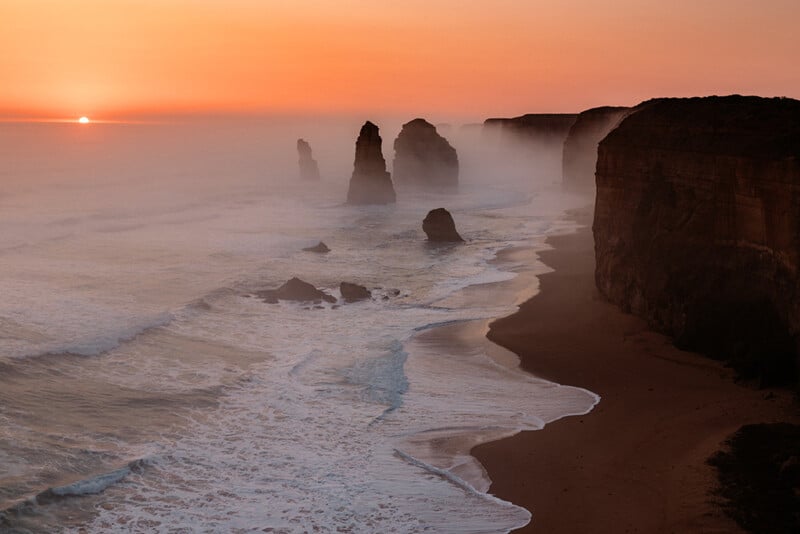
The rise of Instagram coincided with Findley discovering her second love: travel. Merging these two passions proved to be important to her success. Embracing the platform early on helped propel her career, leading to collaborations with global brands like Adobe, Canon Australia, Adorama, and numerous tourism boards. A pinnacle achievement came when her work was published in the German edition of National Geographic Travel magazine – a coveted milestone for any photographer.
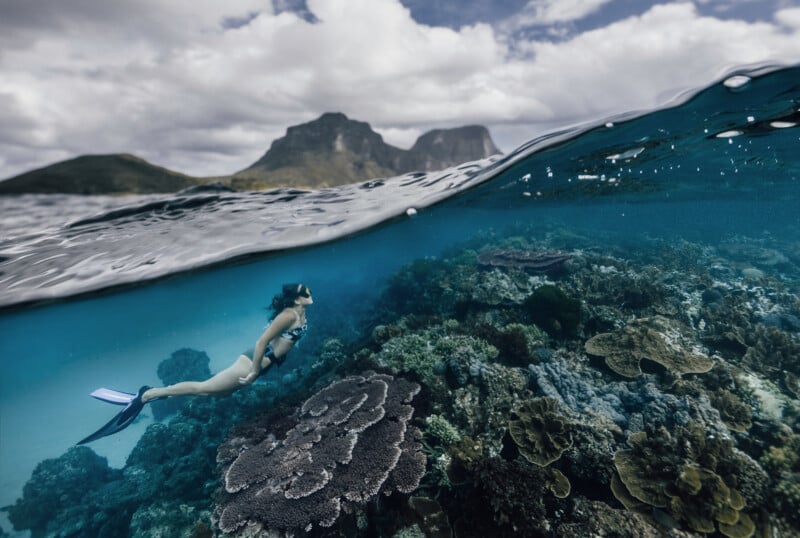
With over 13 years of professional experience, Findley shares exclusively with PetaPixel the core principles that help her create dynamic and engaging nature photographs.
Weave a Compelling Story
Storytelling might seem inherent to nature photography, but Findley notes it’s becoming harder to find in our social media-driven world. “I think storytelling is one of the most important skills to have in the world of lightning-fast social media,” she emphasizes. For Findley, the narrative begins before the shutter clicks. “The storytelling in my photography starts before I even pick up the camera. I envision the story I want to tell for myself. I believe that the most important audience for an artist’s stories is themselves. Storytelling is at its most impactful when the narrator is passionate about the subject, so I have found that an artist’s audience seems to connect the most with the stories that they love to tell.”
Growing up near world-class diving sites ignited Findley’s passion for underwater photography and documenting marine life. “Even with years of experience, underwater photography is always challenging, however, it is one of the most beautiful ways that I can let my art speak for itself,” she states. She often collaborates with female free divers, seeking moments that illustrate the interdependence of humans, marine life, and the ocean. “I love telling stories of how humans and marine life can co-exist in a respectful, non-destructive way.”
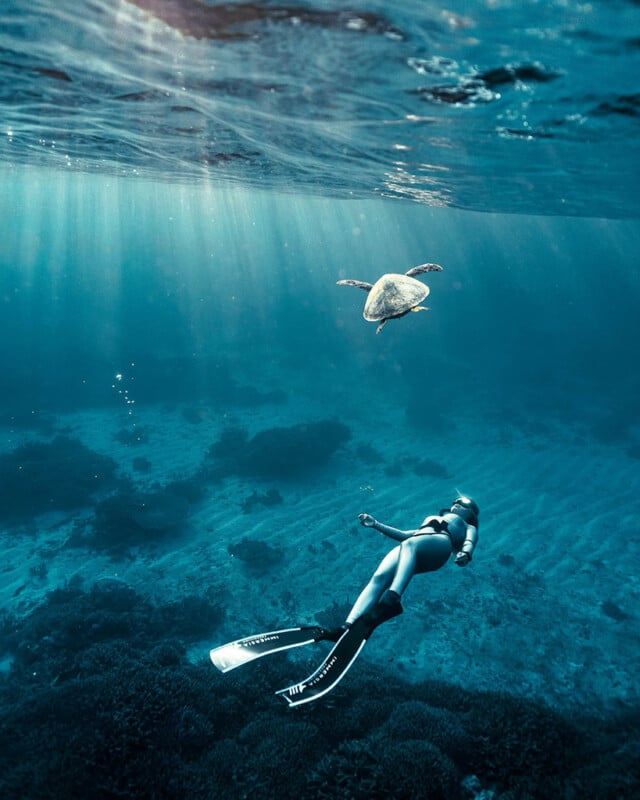
While the ocean’s unpredictability means encounters can’t be planned, having a narrative concept is crucial. “Before I even dive into the water, I think about how to convey the narrative of how our oceans and humans are interconnected. Having the idea of what the narrative is first and foremost, and then really being open to the story as it unfolds, is key,” Findley describes. This intentional approach helps her capture powerful images, often centered on coexistence. “I believe that showing moments that are not often seen creates a strong visual impact, which helps my viewers connect more deeply with the story.”
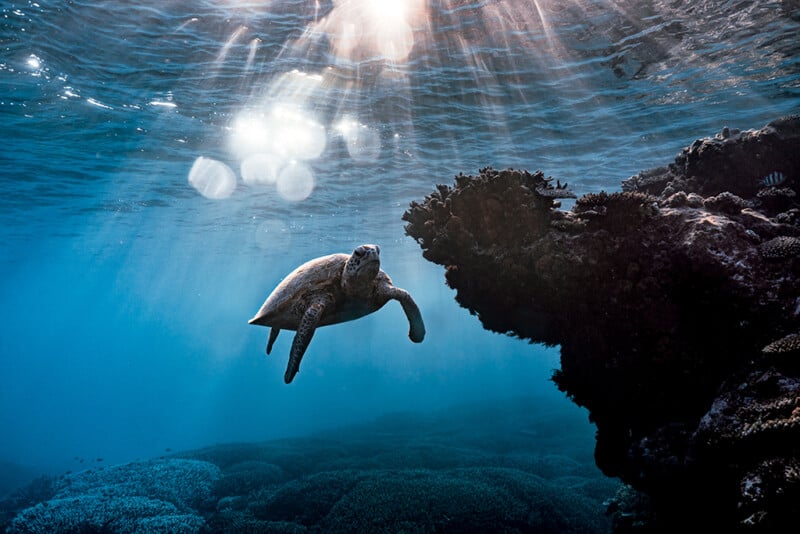
Findley’s visual stories frequently promote conservation. Instead of dictating actions, she aims to evoke emotion and inspire change through her art. “I’m hoping my photography is that bridge that helps people connect with our world, and, therefore, encourages them to become involved in making the world a better place,” she explains. By showcasing the beauty and vulnerability of marine ecosystems, she hopes to foster a connection that motivates others to help protect these delicate places.
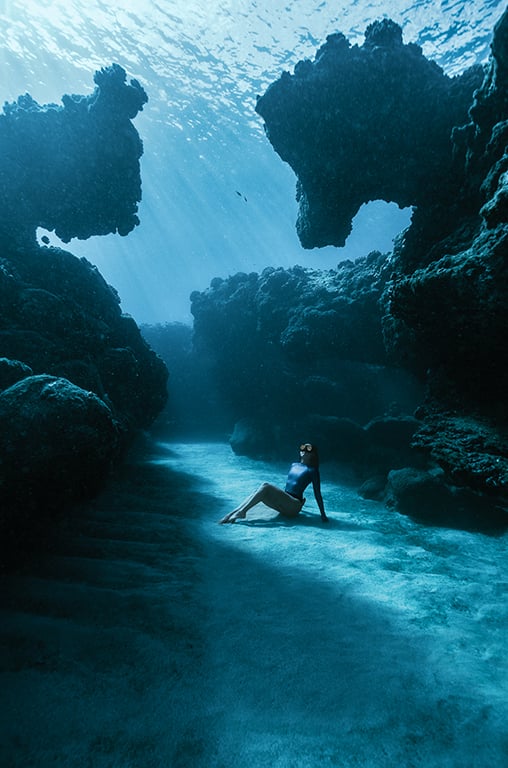
Her storytelling isn’t limited to the sea. A trip to Alaska to photograph brown bears offered a profound experience. “One morning I was on the shores of Brooks Lake, and I saw a mother and her cubs napping far away. While the photos were nice, I felt that I was missing a story. I continued to watch the bears, and eventually, my patience paid off.”
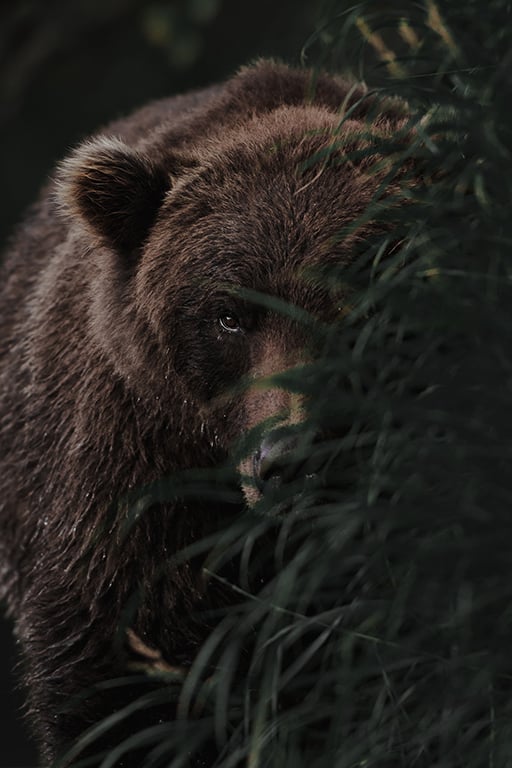
When the bears awoke, Findley witnessed the mother teaching her cubs to fish. “I could tell that they were learning,” she recounts. “The mother would lift her nose up and sniff the air before returning her gaze to the water, and all of the cubs would mimic each action that the mother took. Sitting in this incredible, pristine Alaskan wilderness, watching a mother do what they’re born to do, was truly remarkable. I was witness to one of the greatest wonders in the animal kingdom. I was watching a mother teach her cubs how to survive in this harsh environment. To this day, I am still trying to find the words to describe how impactful that moment was.”
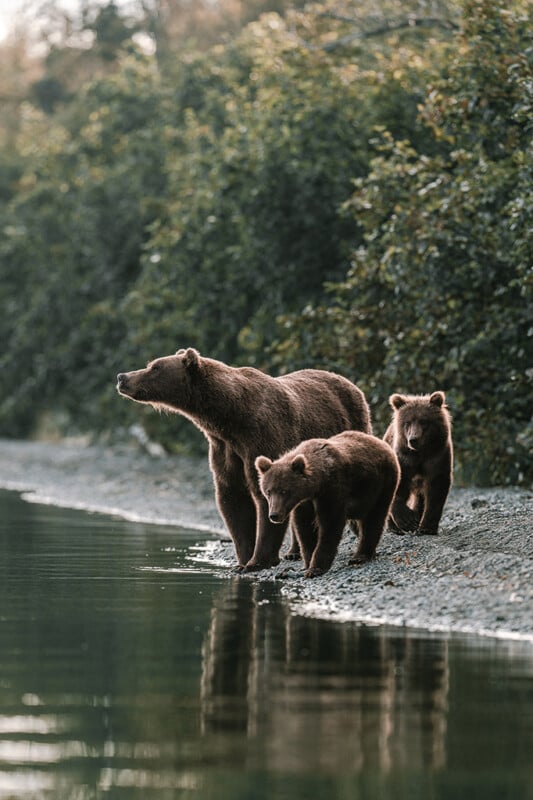
Findley’s work underscores responsible wildlife photography, emphasizing respect for animals and their habitats. She adheres strictly to ‘leave no trace’ principles and maintains a safe distance, never interfering with an animal’s natural movements. By sharing these intimate glimpses, she reinforces the message: “We need to protect these wild places because this is their home as much as it is ours.”
Understand and Master Light
Light is the cornerstone of photography for Findley. “Light is photography,” she states simply. “Without light, there isn’t photography.” To grasp how light shapes images and moods, she recommends an exercise she would practice in her early days: photographing a simple object near a window against a blank wall. “I photographed it every hour, on the hour, from before sunrise to after sunset, to watch what happened with light.” Findley says that this simple exercise taught her the transformative power of light.

While golden and blue hours are popular, Findley encourages exploring all lighting conditions. “I think in terms of nature photography, a lot of people stray away from harsh light,” she observes. “I think it’s important to photograph in all different types of lighting scenarios and get as much experience as you can.” While preferences on certain lighting conditions are natural, diverse experience is key to developing style and skill. “Put yourself in positions that you don’t usually feel comfortable in and learn how to photograph in that position because it teaches you so much about light, while also helping to create a better portfolio and a more expansive skill set.”
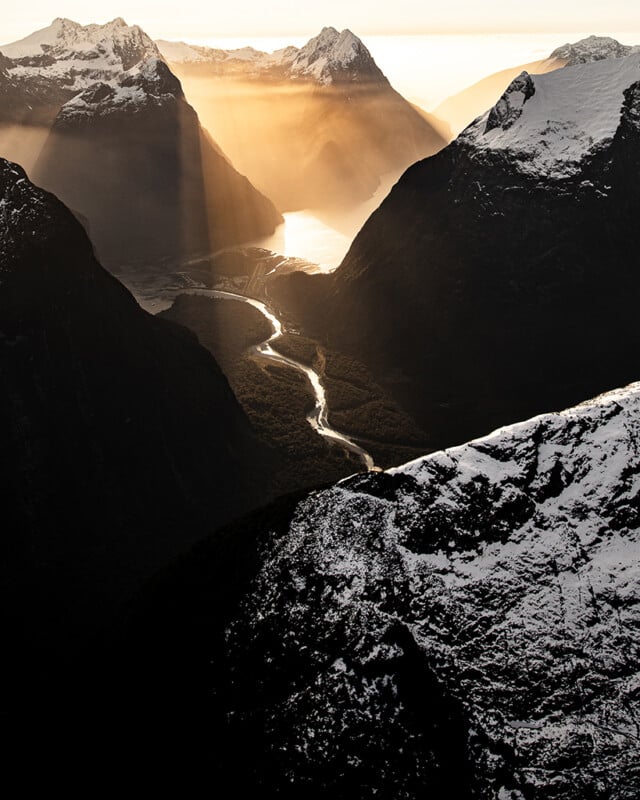
Good light isn’t limited to sunshine; overcast days can offer unique opportunities. “Living in Oregon, I have found incredible beauty in all types of nature photography, thanks to overcast skies and thick fog. These conditions can convey a sense of coziness or a sense of drama.” Don’t just wait for perfect skies, Findley recommends. “There is so much beauty in all different types of lights, and I think we should be embracing all of it because you might be surprised by the mood or the feeling you can evoke through your photography on an overcast day.”
Know Your Subject
Whether photographing wildlife or people, Findley stresses the value of observation before shooting. “For wildlife, this means learning how the wildlife behaves and not interfering in its routine,” she says. “For as unpredictable as wildlife is, they can be equally as predictable to the trained observer.”

Her Alaska experience highlights this. While she got the shots she initially envisioned, her favorite image resulted purely from observation. By learning the bears’ routines, like their early morning walk along the beach, she could anticipate and capture moments she hadn’t planned. “I was so focused on capturing the bears as they fished, I hadn’t even thought about the scene that turned out to be my favorite from the trip: the bears on their routine early morning walk in front of the sunrise. If it weren’t for careful observation and getting to know my subject, I never would have gotten one of my favorite images in my wildlife portfolio.”
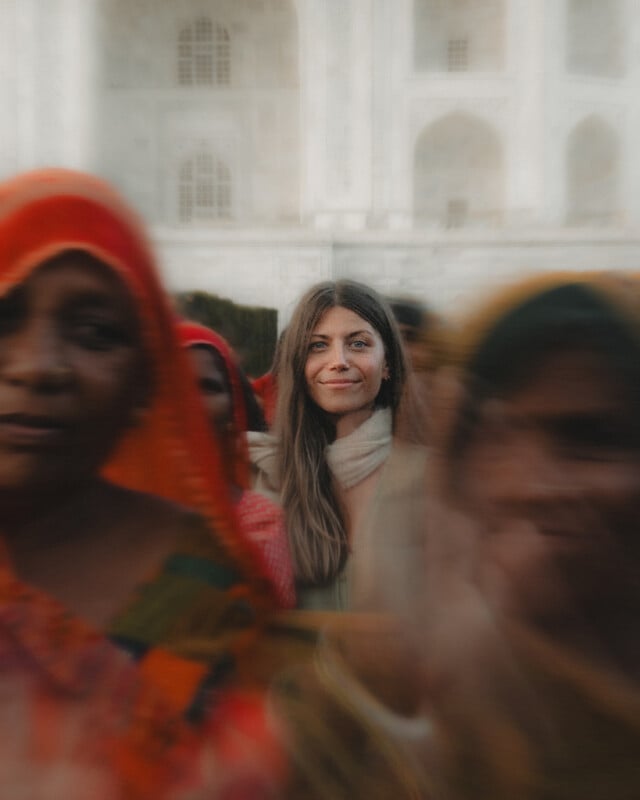
With people, respect is paramount, Findley says. “The opportunity to create a portrait is actually given to you,” she explains. “You’re not taking a portrait. Someone is allowing you into their most vulnerable state to photograph them.” This empathy is crucial for a positive experience for everyone involved. “I think you’ll be surprised with the magic you can create when you really do understand why you’re doing what you’re doing,” she concludes.
Develop Your Visual Storytelling Editing Style
Finding a unique editing style is as crucial as capturing the image itself, according to Findley. “Finding your visual editing style is about finding your own uniqueness, and besides being inspirational and enjoyable to the photographer, it’s also a way to help attract an audience,” she says. “One of the best compliments that I had ever received was when someone told me that they could tell a photo was mine in their feed before they even saw my name attached.” A consistent style attracts an audience, even across a diverse portfolio, Findley says.
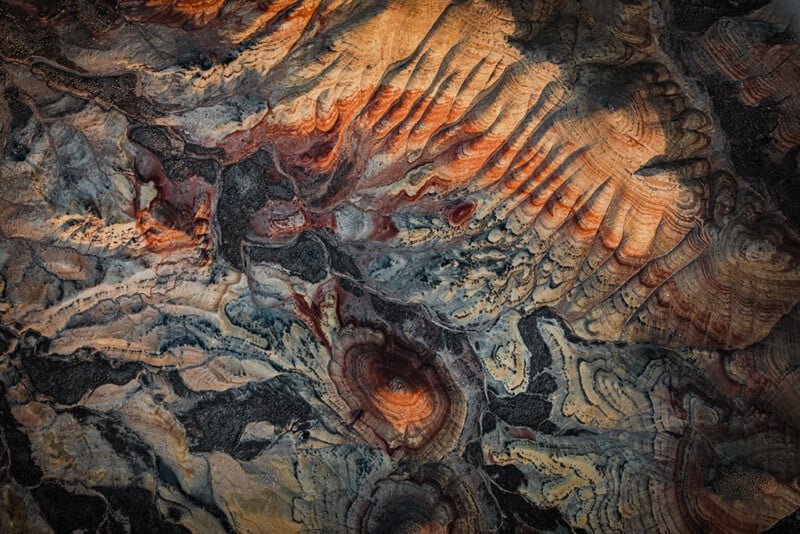
This style evolves through experimentation. Findley, an Adobe Lightroom Ambassador, recommends using Lightroom’s tools to discover what resonates personally. “You should be creating art for yourself first, and if you like it, then you will naturally find an audience that feels the same way that you do,” she says. “The first thing that I recommend is to utilize Lightroom’s large collection of presets. From there, you can explore changing the exposure, shadows, highlights, and color tones with Lightroom’s easy-to-use sliders.” She recommends saving your favorite edits as new presets to build a foundation for future work, remembering that your style will continuously evolve. “The possibilities when editing in Lightroom, especially with RAW files, are almost limitless. Lightroom helps you find your own editing style by using the tools that they have built into the software for you to experiment with.”

While experimenting, aim to enhance, not overhaul, the original scene. “For me, I always strive to get it right in camera and then use Lightroom to enhance the scene and not overpower it with too much editing,” she explains. “Learning specific Lightroom tools like the HSL (Hue, Saturation, Luminance) sliders and the color grading wheels is key, as these can really help you bring out the emotion of what the scene looked like when you were there, while also conveying the mood and feelings that you were experiencing.” For Findley, the process of editing is inspiring. “I love to play in the HSL slider and the color wheels. That part of editing photographs is fun for me because I get to bring an emotion to the image that I feel brings the image to life.”
Shift Your Perspective
In a visually saturated world, Findley emphasizes finding fresh angles on familiar subjects. Simple changes, like switching lenses, can force a new perspective. “We all know the go-to Instagram photos,” Findley notes. “For instance, one of my favorite views in the world is Yosemite National Park’s famed Tunnel View lookout. Even if you haven’t been, you most likely have that view burned into your brain, as it’s one of the most famous views on social media.”
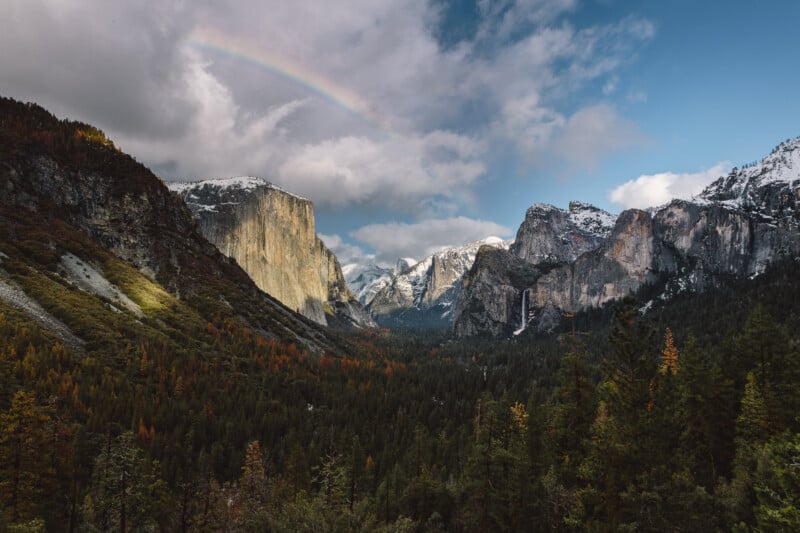
While capturing the iconic shot is fine, Findley encourages looking beyond it. “Tunnel View looks out over the gorgeous Yosemite Valley. This valley is home to some of the most beautiful and detail-filled points of interest in the world, so I like to use a telephoto lens to change the perspective, and show the beauty of Tunnel View that isn’t often seen.”
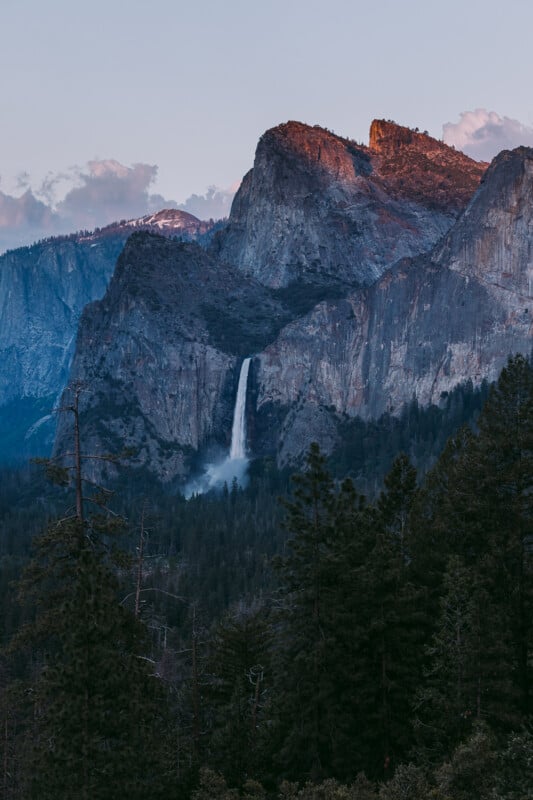

Experiment with different angles, foreground elements, and natural frames. “I love finding tree windows,” she shares. “Tree windows are when tree branches or leaves can form almost a square, rectangle, or circle window to add to the foreground. This gives viewers an incredible sense of being in the environment. Allowing yourself the creativity to think about how you can change your perspective to make your photos different or apply your own style is crucial,” Findley continues. She recommends that photographers trust their intuition and explore details that catch their eye. “Allow yourself to explore the creativity of the things that you’re naturally drawn to or the things that you feel instead of arriving and just taking the obvious shot.”
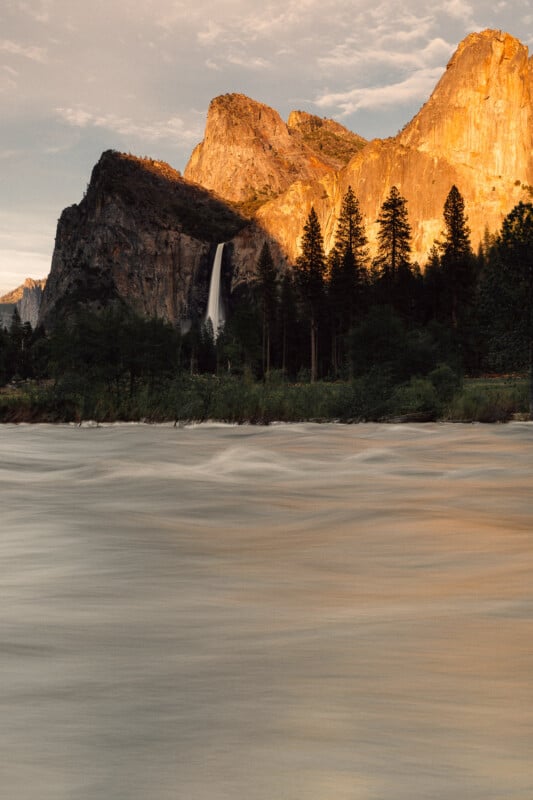
Changing perspective can also reignite creativity. “Whenever I lose the creative spark, I always like to challenge myself to pick up a different lens and only use that lens for a few hours and think about all the different ways that I can tell a story with that self-imposed constraint,” she says. For example, using only a telephoto lens for a typically wide landscape scene. “How am I going to visually tell this story within the confines of the challenge that I’ve set for myself? This constraint forces me to find a new way of seeing, and exploring that perspective creates an opportunity for creativity to flow in a different way.”
Cultivate Patience
Nature photography demands patience, a virtue Findley admits photography itself has taught her. “I think the thing that I learned very early on is that sometimes you need to go to a location upwards of three to five, or sometimes, even more times to get that shot that you’ve envisioned. And sometimes it still doesn’t happen,” she explains. “In contrast to the fast-paced world, photography requires a different mindset. Photography teaches me to slow down and to be mindful and present and therefore teaches me patience. Good things take time, and sometimes we have to wait a long time for that perfect light or that moment to unfold.”
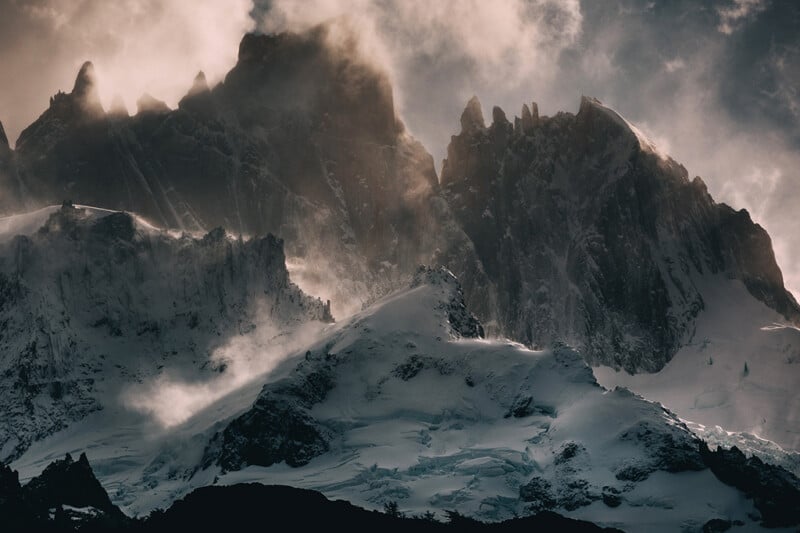
A trip to Patagonia tested her resolve. Despite dreaming of photographing Mount Fitz Roy, severe storms obscured the peak for her entire 10-day visit. Yet, patience brought an unexpected gift. “During a brief break in the weather, there was a parting of the clouds, and light came through,” Findley describes. “Although Fitz Roy remained hidden, I captured one of my favorite photos I’ve ever shot because it is so unique and dynamic, and it tells the real story of Patagonia. The fact that I had the patience to wait 10 days for the moment makes the image even more beautiful than the one I had set out to capture.”
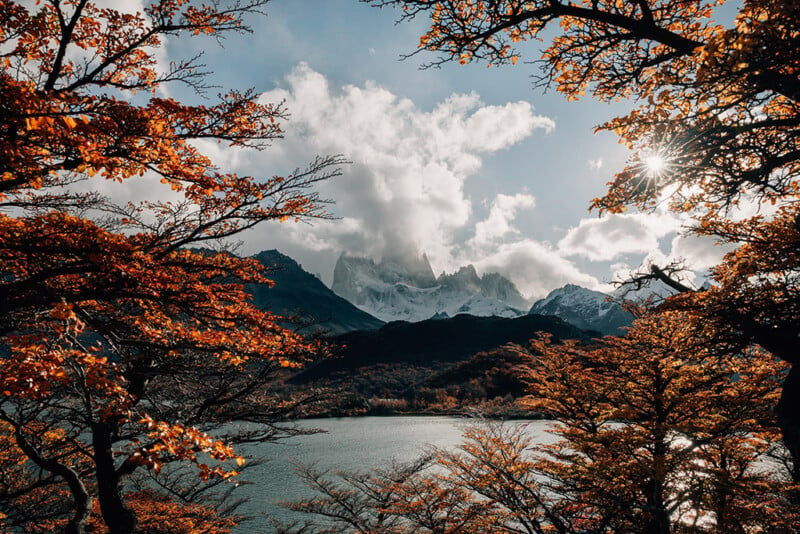
This experience taught Findley that the envisioned shot isn’t always the best one. Patience is an ongoing journey. “Sometimes, photography is a lifetime of patience,” Findley reflects. “I might not get the Patagonia shot that I had envisioned for another 20 years, but I’m going to get it and I’m determined to get it. I have fallen in love with the process.” Social media often hides the struggle, she confesses. “Not very often do people share all of the times when it doesn’t go right.”
Notice the Small Details
While grand landscapes impress, Findley advises photographers not to overlook the small details that fill out the natural world. “The small details often make the big story,” she explains. “As my visual storytelling evolves, I have fallen in love with capturing textures, patterns, or nature’s tiny moments like frost-covered leaves or ripples. These smaller details and moments feed into the bigger picture. For my photo stories, I will often open up with a wide scene, followed by a number of these small moments and details before ending with a strong closing image.”
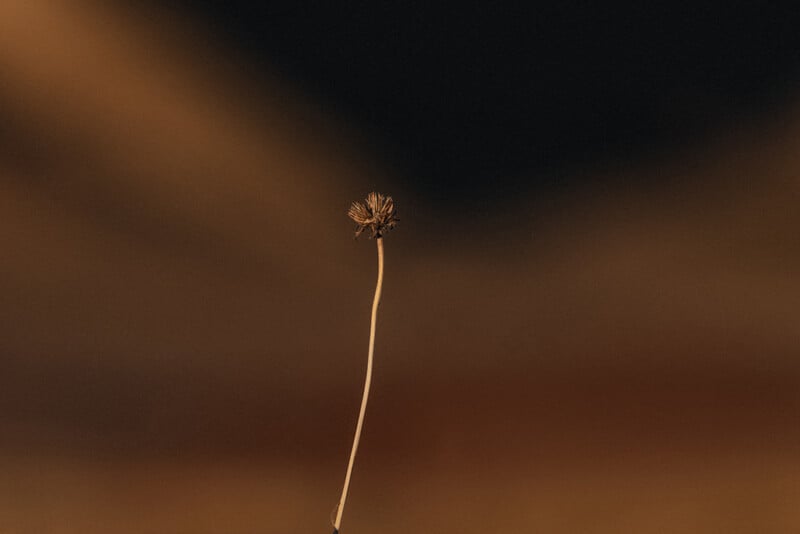

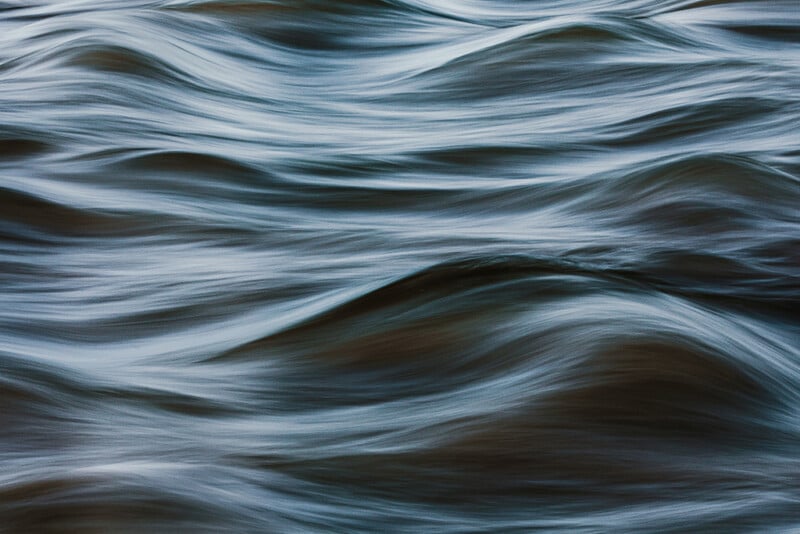
On the Oregon Coast, faced with overcast weather instead of golden light, Findley adapted by utilizing one of her favorite photography techniques: slow shutter speed. “The weather forced me to adjust my plan and start to look down, and I found this one small place where the river meets the ocean, and it created incredible textures.” Focusing on this micro-landscape allowed her to employ the slow shutter speed technique. “When you first look at the image, you actually don’t know what you’re looking at,” she says. “It’s kind of one of those abstract photos that let my audience stop the frantic social media scrolling and really study the image. These small details and moments are a great way to tell unique stories, especially when your original plan isn’t possible.”
Find Joy in the Journey
Ultimately, Findley emphasizes continuous learning and cherishing the creative process. “I learn every time I pick up the camera and I think that is one of the most beautiful things about photography,” she shares. “For me, it’s about falling in love with the art of creating and storytelling, which to this day, makes me pick up my camera. Photography is joyful to me and it brings me back to the 13-year-old who had a film camera and developed it in the darkroom. I always believed that true joy comes from exploring, experimenting, and being witness to the unexpected moments that happen along the way.”
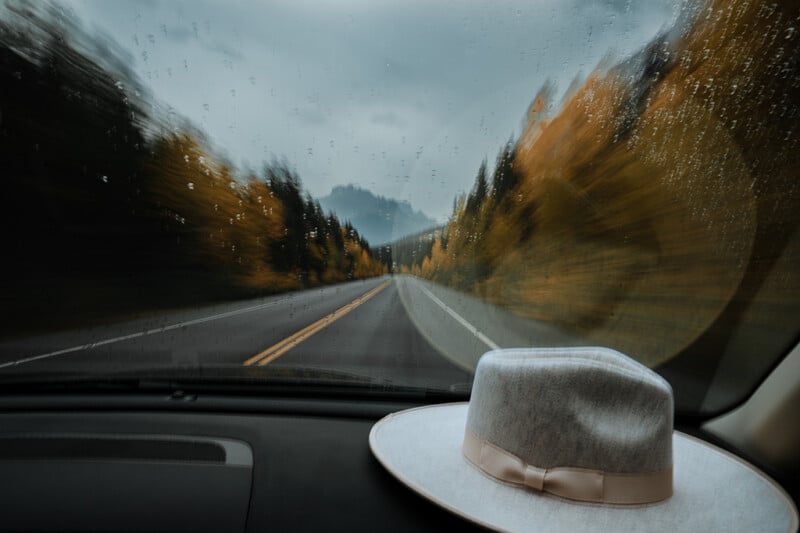
Photography has been Findley’s passport to incredible experiences, like visiting remote East Greenland. “I’m just a girl from Australia who picked up a camera one day and then, almost 20 years later, found herself in one of the most beautiful and unspoiled places on the planet,” she reflects. “Seeing a polar bear, once an impossible dream for someone raised on warm Australian beaches, became a reality. A reality I never would have imagined when I developed my first photograph in that high school darkroom as a young teenager.”
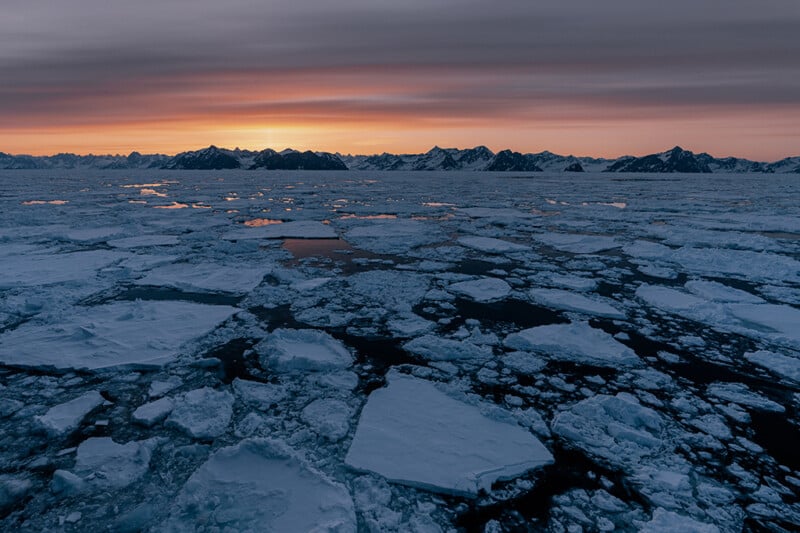
Findley feels a deep appreciation for the journey that has brought her to where she is today. “Stopping to reflect for a minute on how photography has taken me to some of these really unique places that I would never have even dreamed I would get to is something I will always cherish. Photography is the vessel to communicate the incredible experiences my career affords me. I am very privileged to do what I do and lucky that I get to have these wonderful experiences to share with people who dream of seeing the beauty of the world,” she says.
“These opportunities came to me because of my love for storytelling through photography. This girl from Australia has grown up to become a woman of the world, all thanks to photography.”
More from Melissa Findley can be found on her website and Instagram.

Full disclosure: This article was brought to you by Adobe
Image credits: All photos by Melissa Findley



